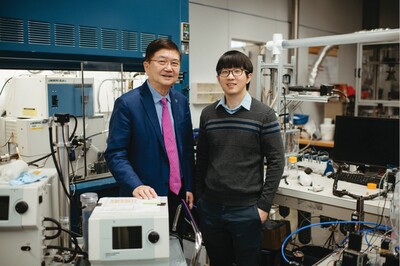Remember Beijing’s 2013 “air-pocalypse,” when the sky in the Chinese capital turned black as a thundercloud? The levels of microscopic particulates known as PM2.5 reached 900 micrograms per cubic meter in the city, three times the level rated “hazardous” by the U.S. Environmental Protection Agency.
The city has since made strides in cleaning up its famously polluted air, but other Asian cities continue to suffer suffocating levels of particulates. Dehli, India, for one, is renowned for unhealthy levels of PM2.5. According to Greenpeace Southeast Asia, PM2.5 pollution caused 54,000 deaths in the city last year.
Now a team of engineers from the University of Minnesota’s Center for Filtration Research has come up with a novel approach to help test cleaning the air of these cities using the world’s largest “air fresheners,” towers that scrub pollution from the atmosphere.
“It provides another approach for air pollution remediation,” says Qingfeng Cao (Ph.D. ’19), a postdoctoral associate with the team involved with the towers. “I don’t think it’s always easy to limit the air pollution emissions. Yes, people should do that, but it takes time for developing countries to really meet the standards for the factories. I think this approach is another way for people to think about.”
Three demonstration towers have been constructed so far—two in China, one in Delhi, and another Delhi project is on the way.
